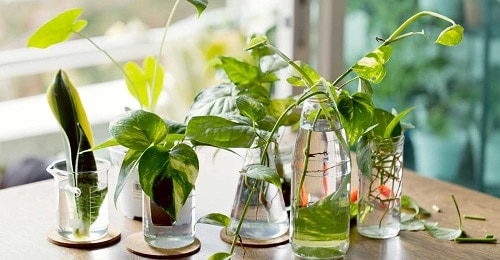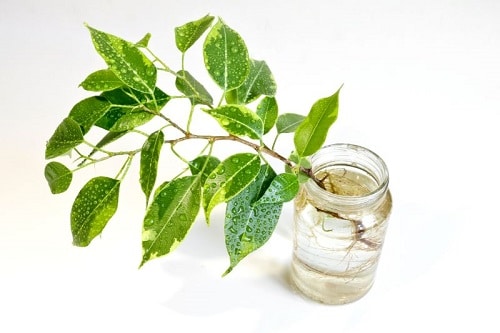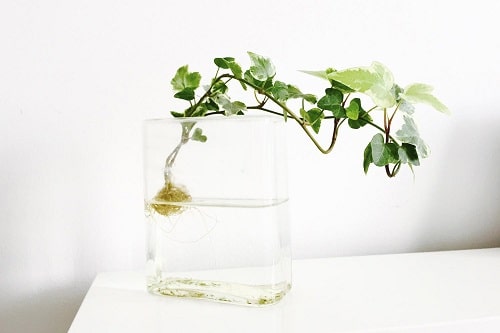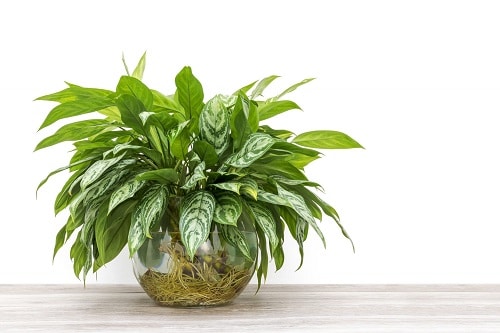Are you Growing Indoor Plants in Water? Avoid These Mistakes to make sure they stay healthy and thriving for a long time to come!

Growing Indoor Plants in Water might seem like an easy task, but there are inevitable blunders you can make while doing so. In this article, you will learn how to avoid making such mistakes!
Here are the best plants you can grow for Indoor Water Garden
Mistakes to Avoid When Growing Indoor Plants in Water
The best way to have a beautiful no-fuss indoor garden is to grow these plants in water. When you do so, avoid the following mistakes:
#Mistake 1: Keeping in Direct Sunlight

When growing an indoor plant in water, it is important to place it in a spot with bright, indirect light. Avoid keeping it at a very dark location or in the direct sun.
#Mistake 2: Using Tap Water
Avoid using tap water if it contains chlorine, this can burn and damage the plant’s roots, eliminating them from absorbing nutrients and moisture properly.
The tap water is also hard and high in calcium with magnesium carbonate salts. It results in stains and marks on vases. Its build-up can also cause algae formation that can eventually kill your plant. Always use filtered water for the best growth.
#Mistake 3: Not Using Aquarium Water
You can also use aquarium water if you have one. As it accumulates phosphorus, ammonia, nitrogen, potassium, and beneficial micro-organisms, using it for your plants in the water will enhance their growth.
#Mistake 4: Using Opaque Containers

A transparent container will also allow you to keep a close eye on the condition of the water. You can see the water clearly and change it the moment it turns hazy.
When picking out a container for growing plants in water, get one that has a wide mouth, like a glass jar, bottle, or even a lovely vase. This will allow air to flow through and easy access for you to clean the planter.
Before placing the plant, you can also add other contents to improve the aesthetics. This can be pumice stones, pebbles, and mixed rocks.
#Mistake 5: Not Knowing the Use of Charcoal
When growing indoor plants in water, stagnant water can be a huge culprit for funny smells. If you feel like the planter is smelling bad, then empty the water and clear out the jar or bottle. Before adding the water again, place small pieces of charcoal. This will help in filtering the water and preventing any fungi or algae build-up.
#Mistake 6: Not Cleaning Water Deposits and Spots
Water spots not only reduce the appearance of glass vases, but they also make them cloudy, which can make it difficult for you to keep track of the water’s cleanliness. Use distilled white vinegar to clean the water lines and spots. Rinse the vase or glass properly with hot soapy water and then dry it using a clean cloth.
#Mistake 7: Not Changing Water Timely

Changing water for regular hygiene is essential. The moment you see any discoloration or paleness in water, change it. When you grow indoor plants in water, you must always ensure that you clean out the jar or bottle every two weeks, so there is no contamination of any sort.
#Mistake 8: Using Too Hot or Cold Water
Using too hot or cold water can shock the plants and damage the roots. Always make sure that the water is at room temperature before pouring it into a vase.
#Mistake 9: Using Detergent to Clean Jars and Vases
When cleaning a planter or glass bottle, never use any detergent. Even the smallest amount of liquid soap can aggravate and contaminate the water your plant grows in.
Always make sure you rinse the planter with warm water and then sun-dry it to kill all the germs or pests that have latched on. This will also clean any sort of fungal residue that water collects over time.
#Mistake 10: Staying Away from Fertilizers!

When growing indoor plants in water, it is essential to feed them. A pinch of fertilizer every few days will keep them lush and green.



What kind of Charcoal do you use in the water please?
Look for horticultural charcoal at you local plant nursery or garden center.